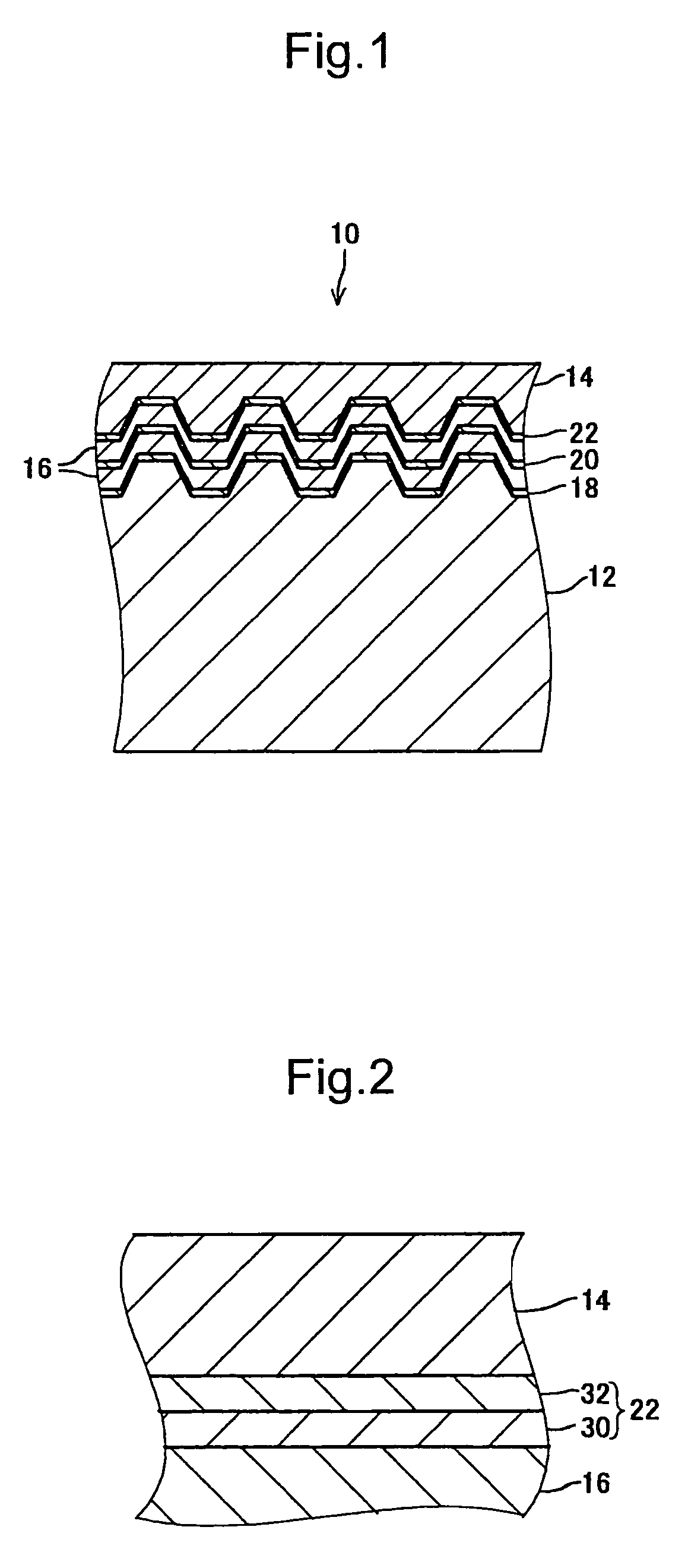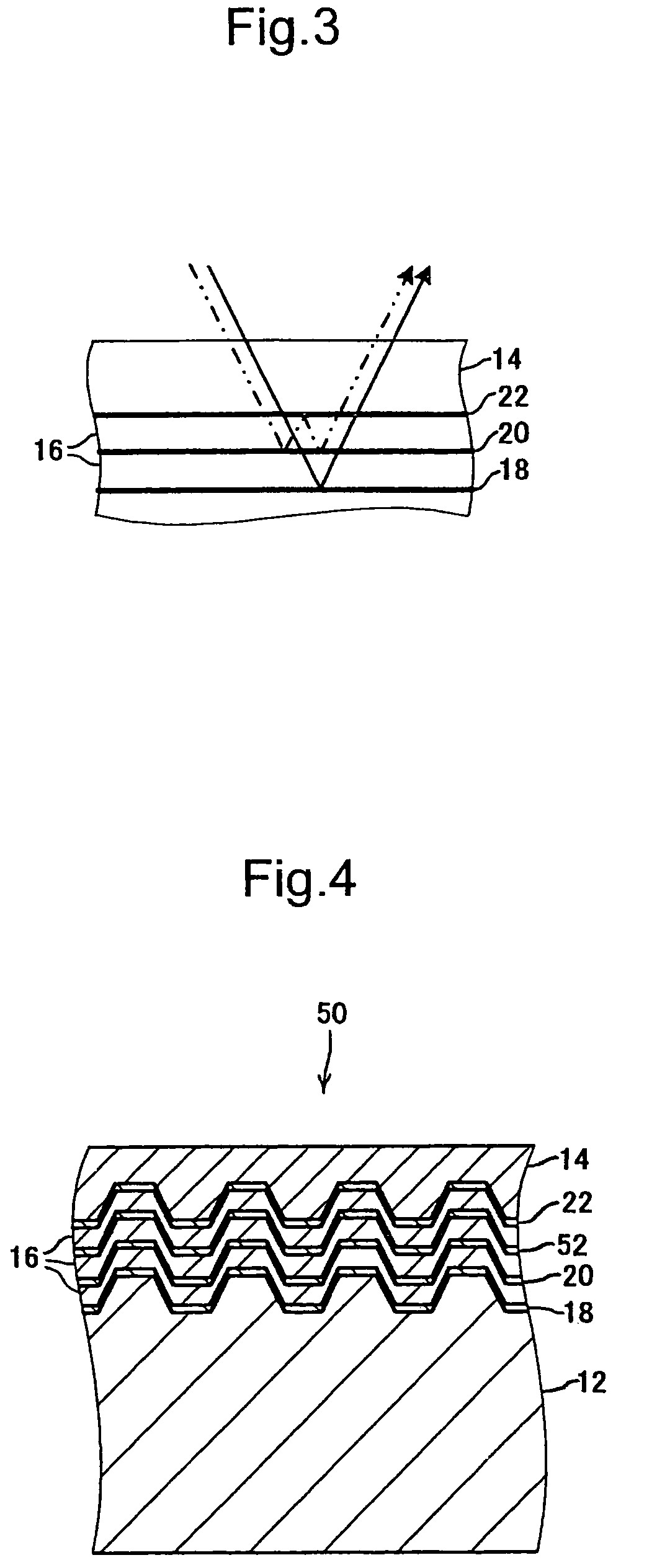Optical recording medium
a technology of optical recording medium and optical recording medium, which is applied in the direction of mechanical recording, line-transmission details, instruments, etc., can solve the problems of increasing the interference effect, reducing the exactness of data reproduction, and reducing the quantity of other reflected light that interferes, etc.
- Summary
- Abstract
- Description
- Claims
- Application Information
AI Technical Summary
Benefits of technology
Problems solved by technology
Method used
Image
Examples
working example 1
[0048]Three optical recording media A, B, C were produced. These optical recording media were R-type with three recording layers and had configurations equal to optical recording medium 10 of the first exemplary embodiment. These three optical recording media A, B, and C each had the mutually different configuration of the information layer 22. The configuration, with the exception of the information layer 22, was equal.
[0049]In more detail, the information layer 22 of the optical recording medium A comprises a recording layer of Zn20Si10Mg25O20S25 (mole ratio) material and a dielectric layer of ZnSSiO2 material arranged on the cover layer 14 side of this recording layer. The thickness of the recording layer was approximately 18 nm and the thickness of the dielectric layer was approximately 60 nm.
[0050]Further, the information layer 22 of the optical recording medium B comprises a recording layer of Zn20Si10Mg25O20S25 material and a dielectric layer of Al2O3 material arranged on the...
working example 2
[0066]An optical recording medium F was produced. This optical recording medium F was a ROM type with three recording layers and has a configuration equal to the optical recording medium 10 of the first exemplary embodiment.
[0067]In more concrete terms, the information layer 22 of the optical recording medium F comprises a reflective layer formed from Al material deposited on the concavo-convex pattern of the substrate 12 and a dielectric layer of ZnSSiO2 material arranged on the cover layer 14 side of this reflective layer. The thickness of the reflective layer was approximately 2.5 μm. The optical absorbance of Al is approximately 15%. Table 2 shows the configurations of the information layers 18, 20, and 22 and the spacer layer 16 of the optical recording layer F.
[0068]
TABLE 2Opticalrecording mediumFGInformationReflective layerMaterialAllayer 22Thickness(nm)2.5Dielectric layerMaterialZnS•SiO2—Thickness(nm)32—Spacer layer 16MaterialAcrylic UVcurable resinThickness(nm)20Information...
PUM
| Property | Measurement | Unit |
|---|---|---|
| reflectance | aaaaa | aaaaa |
| thickness | aaaaa | aaaaa |
| diameter | aaaaa | aaaaa |
Abstract
Description
Claims
Application Information
 Login to View More
Login to View More - R&D
- Intellectual Property
- Life Sciences
- Materials
- Tech Scout
- Unparalleled Data Quality
- Higher Quality Content
- 60% Fewer Hallucinations
Browse by: Latest US Patents, China's latest patents, Technical Efficacy Thesaurus, Application Domain, Technology Topic, Popular Technical Reports.
© 2025 PatSnap. All rights reserved.Legal|Privacy policy|Modern Slavery Act Transparency Statement|Sitemap|About US| Contact US: help@patsnap.com



